|
Valerie Phillips
On 'Little Baby Nothings'
(available here)
June 2024
Feature & Interview: Steve Bateman
Hot on the heels of some tantalising teases, on the
morning of June 21, 2024, it was announced through Manic Street Preachers'
official website and their social media channels, that excitingly, Little
Baby Nothings - a brand new photographic book by Valerie Phillips featuring
over 200 previously unseen photographs of the band taken between 1991-1992
- was to be published just one week later!
Impeccably and sleekly designed by longstanding Manics
and Valerie Phillips collaborator, the exceptional, esteemed and exemplary,
Farrow. Little Baby Nothings is exclusive to MSP's webstore and limited
to 2000 copies - a mere 100 of which were personally signed by both
band and photographer. Unsurprisingly, pre-orders for the autographed
editions sold out within a matter of minutes! The press release for
Little Baby Nothings, also contained these exhilarating quotes: "We
thought these photos were lost but they are found, and I'm so grateful
to Valerie for those intense 20 months when she saw all the energy and
ragged glory of Manic Street Preachers, and more importantly captured
our little bit of history seen here in these vivid, beautiful photographs."
- Nicky Wire
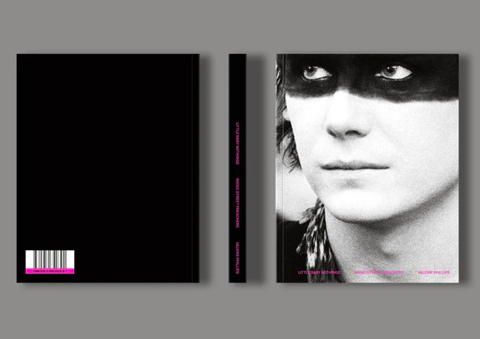
"When I was a baby photographer obsessed with
records and seeing bands, I was asked by a London music magazine to
get a train to a small town in Wales to take pictures of Manic Street
Preachers. I had heard their song ‘Motown Junk’ and loved
it. I hadn’t yet figured out how to take the kind of pictures I
wanted to take. So I made it up. That day. With the beautiful Manics.
We were both in our own starting-out all-consuming little worlds and
now those worlds collided. For the better part of two years (1991-1992)
I followed them around taking pictures - at James’ and Sean’s
family home, on tours, at recording sessions, video shoots and in the
weird, boring, fascinating random places we found ourselves along the
way. These pictures were made in a daze of wide-eyed enthusiasm, wonder,
magic and mayhem. They are the beginning of our stories." - Valerie
Phillips
And now, as survivors with staying power, who have
resiliently kept the flame alive against all odds. Not only are MSP
big hitters with an eventful, long and illustrious career, a glittering
list of ever-growing achievements and an exceedingly important / rich
legacy etched in stone. But also, they are off the scale, undimmed and
unpredictable talents, who remain ceaselessly unafraid of musical maturation
and pushing the envelope, perpetually reinventing themselves / evolving
and always leaving listeners eagerly anticipating their next move! With
Little Baby Nothings' press release blurb, even setting out how "Following
a first meeting thirty-three years ago in Manic Street Preachers’
hometown Blackwood, Valerie Phillips was given unprecedented access
to the most exciting rock‘n’roll band of their era at the
point they exploded onto the national stage... Phillips perfectly captured
their burning intensity during the period, as well as the unshakeable
bond that the quartet shared off stage... In the years covered in Little
Baby Nothings, Manic Street Preachers went from a controversial, cult
concern to regularly appearing on Top Of The Pops and at gigs in front
of an increasingly fervent fanbase. Photo shoots took place in multiple
venues on the British gig circuit that are now razed and all but forgotten,
those whites-of-the-eyes clubs from Norwich to Northampton that formed
the backbone of the British live scene... The result is an insightful,
inspirational and intimate book that portrays a band out of time, utterly
alone in their self-belief and in their presentation; a book where each
frame reflects the inimitable chemistry between band and photographer."
The very same morning of the Little Baby Nothings
announcement, media outlets soon began running this as news bulletins
and news stories, with Clash Magazine posting: "A new book collating
early photography of Manic Street Preachers has been announced. The
band’s fusion of left-wing, anti-authoritarian politics, glam metal
riffs, and eyeliner made them instant cult heroes, splitting opinion
like few other groups in their era. Gaining copious amounts of inches
in the weekly music press, Manic Street Preachers quickly built up a
profoundly influential visual identity, echoed by thousands of fans.
Incoming tome Little Baby Nothings - the title echoes a song from their
debut album - collates work by photographer Valerie Phillips, who shot
them countless times during their open era. A limited edition book published
by Longer Moon Farther, the idea was sparked into life after bassist,
lyricist, and effortlessly stylish gentleman Nicky Wire found some long-lost
negatives in his home archive. Touching base with Valerie Phillips,
the book was brought into being through those conversations. Nicky Wire
pens the introduction to the book, and an excerpt has gone online: "It
was a bitterly cold day in late winter March 1991 - Vox magazine are
coming down for a photo shoot - like everything back then it feels important
and vital - then a ball of American energy bursts through the door -
wide eyed optimism and thankfully some severe sarcasm are quickly evident,
It doesn’t take long to realise that some magic is happening. Very
limited copies of the book will be available on the forthcoming Manic
Street Preachers sold out joint headline tour of the UK with Suede."
NME also reported how "The band granted Phillips access over an
extended period of time in the early ‘90s, at a time when they
were breaking through into the mainstream. They forged a lasting relationship,
with her images going on to be used on the sleeve of 2007 album, Send
Away The Tigers."
While on publication day, June 28, 2024 - coincidentally,
the very same day that the generation-defining, rotating dream double-header
MSP / Suede Tour was due to begin; an exquisite pairing / parallelism
of self-contained, legendary, appealing, deeply adored, incomparable,
lauded, engaging, hero worshipped and supreme musical titans / outliers,
who each have working-class backgrounds, visionary artistry and made
waves / rose to prominence at a point in time when The Music Industry
and the music press, operated in a vastly different manner. Which saw
both edgy acts vacating the hinterland / crashing the mainstream with
spirited temerity and a death or glory ethos, yet while existing in
their own creative worlds, also enjoying an enduring kinship / harmonious
relationship and even sharing emotionally invested believers and integral
fanbases / cross-pollinated fandom. After laughing at wearing some of
his Mum's old blouses, but commenting that when signing copies of Little
Baby Nothings in the studio with Nicky and Sean the other day, how proud
they all were of their haircuts during this phase / chapter. In a reflective
mood and with typical candour, humbleness and integrity, a clear-eyed
James then lucidly, thoughtfully and pertinently panegyrised on BBC
Radio Wales Breakfast with great admiration, affection and wonderment,
about being transported back in time, aided by such an immersive, emotive,
impactful, poignant and truthful time capsule: "To be honest, mostly,
it's just pride seeing some of the early photos and realising what a
good photographer Valerie was as well. It's such a natural view of what
a band is doing at the start, playing in these small clubs and you can
see that perhaps something is happening, and perhaps you can see the
struggle in it as well sometimes. A natural vibe in photos is really
cool!" And, of the maximum effectivness of these black and white
stills, Manic Street Preachers' very own historian in chief, Nicky,
even articulately and astutely observed: "Valerie understood our
aesthetic and our very essence as a band. In a world of grunge and bagginess,
she saw our faded punk trash glamour and devotion to each other. You
can see that vividly in the photos she took."
For full book specifications and the opportunity
to order remaining copies of this enthralling, voluminous, chic, praiseworthy
and essential must-have tome, a t-shirt and bundles, please visit https://store.manicstreetpreachers.com/collections/little-baby-nothings
Describing her signature style of photography as "my version of
documentary", Valerie Phillips was born and raised in New York
City, but has now been based in London for a great many years. If you
would like to learn more about her background and her work, you can
find regular updates at https://www.instagram.com/wynterinspace/?hl=en
as well as further information here https://en.m.wikipedia.org/wiki/Valerie_Phillips
Notably, while researching, some quotes that stood
out about Valerie's photography and her career, were published in a
Q&A with The KITAB... "The best thing I ever did was to find
my own way of making work and stick to it regardless of outside opinions."
And, when asked what she wants to achieve with her photography in the
end: "I like real life - unsanitized, sometimes unpretty, but packed
with spirit and curiosity and obsession. That’s what my pictures
are about. Originality is important to me. I want my work to be instantly
recognizable as my own unique vision of the world. Most of my books
and zines are autobiographical to some extent, and influenced as much
by the life I live as they are by the subject matter. I don’t mind
if people like or dislike my pictures, as long as I know I’ve made
work that is true to my own experience of the world and of the person
I’m having a photo adventure with." Valerie also once unapologetically
confessed to Issue Magazine: "I have always disliked really slick,
conventional, boring stuff where you can’t tell someone’s
personality. So I was interested in pictures that showed some humanity
in that person, something that engaged me, that made me want to know
more about their world and what it looked like."
R*E*P*E*A*T's Editor, Rosey, very kindly contacted
Valerie through Instagram on my behalf, to see if she would be interested
in being quizzed about Little Baby Nothings, to help raise awareness
about her body of work, and also, to continue a series of interviews
covering MSP Photobooks (Kevin Cummins, Tom Sheehan) on the website
- with the zine astonishingly celebrating its 30th Anniversary this
year! I was of course tickled pink when Valerie agreed to take time
out of her hectic schedule, to speak with me on the day before her brand
new tome was released - about chronicling the photogenic four-piece
in their infancy for posterity - who was very genial and open. And,
I hope that this editorial is an interesting and informative accompaniment
to Little Baby Nothings, her stunningly beautiful and visually spectacular
Manic Street Preachers treasure trove - not only for self-confessed
Manics addicts, staunch supporters and disciples who have long been
renowned for their fierce, tribal loyalty. But, for the band themselves
as well!
Especially as Valerie's eye for photography and breathtaking
compositions, impressively showcase how in the iconoclastic, scintillating
and heart-stopping Generation Terrorists era - when rock 'n' roll was
their epiphany and culture, alienation, boredom and despair, constituted
the central themes found in the Welsh stalwarts' widely celebrated songs,
in which MSP masterfully administered apodictic judgements and irrefragable
truths. With a recipe for success, an incontestable and airtight strength
in numbers brotherhood / camaraderie, headstrong mindset, high expectations
for reaching the top of the tree, restless energy, courage in their
convictions, commitment to the cause and "not wanting to mean anything
to anyone, rather everything to everyone!" With Nicky postulating
in No Manifesto (A Film About Manic Street Preachers) how, convinced
that music could be their future, the fresh-faced group "genuinely
believed that music had a place in society to inform people, to instruct
people and to make a difference."
The hotly-tipped young bucks - who were undeniable
front-page news and had to live up to the hype - were a prodigious breath
of fresh air amongst the current music scene and caused a sensation.
On account of being a singular, dynamic, supercharged, opinionated,
proselytising, captivating, stimulating, uninhibited and unfaltering
in-your-face, flashbang grenade of amour propre, primal fury, resentment,
anxiety, frustration, strategizing, inspired creativity, cerebral ideas
/ influences, heart and soul, hunger, guilelessness, hardwired melancholia,
loneliness, understanding, empathy, righteous indignation, defiance,
antagonism, revenge, forgiveness, determination, perseverance, swaggering
braggadocio, social critique, political commentary, ethics, morals,
manifestos, anarchistic smash the system radicalism, unlimited potential
and '4 REAL' believability! Who, having long been au fait with photography
and music as natural bedfellows, also just so happened to have a considered,
distinctive, unified, delectable, identifiable, transfixing and untouchable,
picture perfect look. Which, twinned with the magnetic pull of their
almighty, enrapturing, high calibre, mind-blowing, wide in scope and
unmistakable songbook, separated them from the pack and ensured that
they were a photographer's dream...
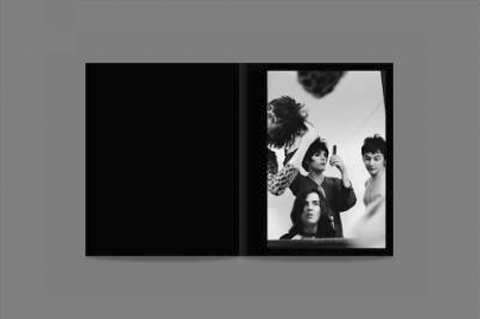
1. To begin with, I read that "Little Baby Nothings
collects together many previously unseen photos of Manic Street Preachers
in the period leading up to and immediately following the release of
their classic debut album Generation Terrorists" and "was
initiated after Nicky Wire rediscovered some lost prints in the band’s
archive, prompting Phillips to explore her own collection for additional
unseen images." How did you choose which shots to include and how
long was the selection process?
"Well, actually, Nicky and I had been talking for the last couple
of years about the work that I did with them in the very, very beginning
of their career, which was also the beginning of my career. We'd been
kind of kicking around the idea that it would be nice to do something
with that material, because a lot of it has never been seen before.
And then, looking through his archives, he found a lot of contact sheets
of mine that I hadn't seen in years and he sent me a bunch of prints.
But, they weren't really so much lost, it was more he came across them,
which then prompted me to explore my archives further and really kind
of go into depth about what amount of material I had. I was kind of
surprised by just how much there actually was!"
*I ask Valerie if, as a general rule, there was an average amount of
pictures that she would routinely take per photography session with
MSP*
"I never had an ‘average' amount of film I shot, as every
job calls for something different. Generally I shoot a lot, because
it’s fun and I like a big selection to edit from. I shoot digital
now, but even when I shot film, I shot loads."
2. Did you newly print each and every photograph, or were the original
negatives all scanned and then processed digitally?
"They were done in sort of two stages. Because I didn't have a
lot of the contact sheets - I had negatives - but a lot of the contact
sheets had been lost in various places over the years. I mean, sometimes,
you would do a shoot for the record company and they would keep the
contact sheets and you kind of forget to get them back - I just had
the negatives, which is actually the stuff that's really precious. So,
I had to go and get all of the negatives sort of low-res digitally scanned
somewhere, so that I could see them as almost like little mini-prints
on my computer. The way I work is very analogue - I mean, I kind of
print it out on my laser printer at my home studio - so I printed everything
out and then assembled a sketchbook dummy of what images I wanted to
include. Once I'd done that, then it was a more kind of technical process
at my retouchers, where everything is photographed - the negatives are
photographed on a very high-resolution camera, then digitised and worked
on as digital files."
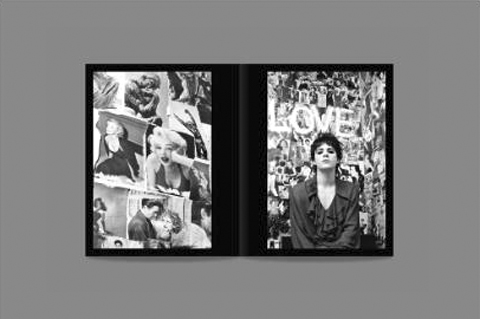
3. How many photography sessions did you have with the band and were
all of these specially commissioned, e.g. Generation Terrorists inner
sleeve pictures, Motorcycle Emptiness single artwork?
"It's quite hard to say how many sessions I had with them really,
because over 1991 and 1992 - which was essentially the band starting
out and myself starting out - I went on several tour dates and sort
of nipped in and out of different tours with them. So, I would go and
stay up North for a few days, if they were in kind of Sheffield and
the surrounding areas, or then we'd maybe be in Brighton or Southampton
- down South for a few days. So over the course of two years, I attended
various things that they were doing. So if they had a video shoot, I
would go down and do pictures - there is also a lot of downtime when
a band is just waiting around backstage, between soundcheck and going
on, so there's a lot of real time where they're just sort of not doing
anything. So, we had a lot of time where we could just optimise that
and make pictures. As for commissions, the way it usually worked, after
the first time that I had worked with them which was for a magazine,
we just sort of got on very well - there was just a very easy chemistry,
very unstressful and very organic. And so I think because they didn't
mind having me around, I got invited along on other tour dates and we
kind of ended up making a body of work quite organically. Then, from
that, they chose some images that they liked and they ended up on their
record sleeves. So, it wasn't so much that I was shooting for those
sleeves, it was more that, 'Hey, we really like this particular collection
of images.' With Motorcycle Emptiness, I think we shot those pictures
in a guest house or bed & breakfast in Sheffield I think it was,
and then they ended up using them for the sleeve."
*I ask Valerie if she still has all of her MSP AAA Tour Passes*
"I have some Tour Passes - some are laminates, some are just stickers."
4. Can you remember your first impressions of meeting the Manics and
were they comfortable being in front of the lens?
"My first impressions I remember really well, because I actually
got sent by a magazine called Vox, which was one of the publications
that came out from the same publishers as the NME in the early '90s.
It was a really great music magazine for a while and I had really wanted
to work for it, so when they called me to go and photograph a small
up-and-coming band as well (for the article, BLACKWOOD CALLING - June
1991), I was like, 'Great!' I knew the Manics' work, because I had heard
Motown Junk and loved it, so off I went on the train to Wales - to Blackwood,
I think - to James' family home. I think they were quite shy, but quite
intense, very kind of serious and focussed about what they wanted to
do within the band. But, it's also just a group of four really great
friends, that I was kind of joining in on. It was very sort of seamless
in a way, it wasn't very difficult and there isn't anything that I remember
being particularly awkward. I was just sort of joining in and they were
kind of leading the journey, in terms of the photographs you know and
what we wanted to do that day, we kind of made it up as we went along,
really."
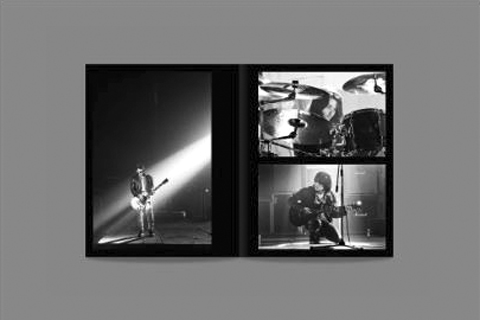
5. Do you have any cherished shoots / favourite Manics images, for either
aesthetic or significant reasons?
"There's a lot of pictures that I really do cherish. I mean, one
is the cover of the book - I just absolutely love that! I find a lot
of them really sort of heartbreakingly sweet, because they're quite
sort of innocent and they're quite kind of punk... I don't know, they
sort of signal a direction and intent that actually got followed through
on in hindsight. I don't know that I can single out particular things,
but I do really like the cover where Nicky's kind of got make-up that
looks like a mask over his eyes. And, I do really love one of the images
of Richey - they were staying in a residential studio (Black Barn Studios,
Surrey) when they recorded Generation Terrorists, so it's essentially
like staying on the premises in a house out in the country and Richey
had collaged the entire bedroom he was staying in. He just collaged
it from wall to wall, ceiling to floor! I remember walking in and thinking,
'That's quite a funny thing to do' (laughing), in what is essentially
a hotel room. I loved it! I just thought, 'What a fantastic bonus for
me, to come down and instead of just getting some pictures of them over
a mixing desk or something, I get this kind of art project in a room.'
It was pretty amazing!"
6. I know that books and zines have been of vital importance to you
since you were a teenager, but for Little Baby Nothings, why did you
decide to have a limited edition run of 2000 copies?
"I think we just wanted to keep it accessible, we didn't want to
make (pausing), I think 2000 is a small run for a band, but it's not
a small run for me. I mean, I do a lot of books generally with kind
of teenagers or girls in their early twenties - again, following them
and their lives around, and usually, my print runs are about 1000. So
for me, this is a large print run, but for the band it's obviously a
small print run. But, I think the decision was just, 'Let's go and do
this and sell it out.' There's something nice about having something
that's not just sort of endlessly available - it's kind of exciting
and the fans can buy it and it's not too expensive, it's not too big
and cumbersome, it's the right size to be able to be kind of manageable
and reachable for fans of them and for fans of me. I don't really know
- I'm not really sure there was a massive committee decision about it,
I think it was just like, 'Hey, this seems about right.' You know when
you see these remainder book stores and you always see the same kind
of shitty, rock hacks and you just think, 'Oh my God, they must've just
printed so many of these and they're just leftover.' You see the same
ones in charity shops and I just find it really kind of depressing and
I always think, 'I really hope my books don't end up like that anywhere
(laughing)!' I want them to be bought and enjoyed and then I'm onto
the next thing."
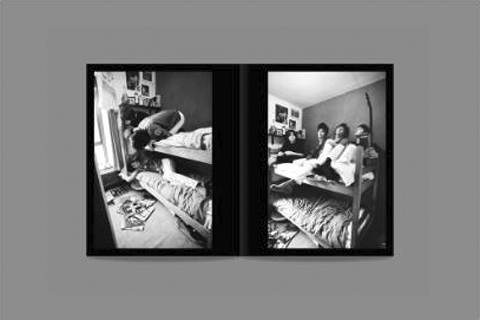
7. Obviously, the picture used for the front cover of any photographic
book is extremely important and the sublime shot of Nicky on Little
Baby Nothings, is so striking, strong and unforgettable! I also think
that the authentic / vintage film grain really adds a lot to this image,
which is something that you don't see as often nowadays in the digital
age?
"Yeah, and I used to shoot on very, very high speed black and white,
very grainy Ilford film, which that photograph was shot on. I also think
that the grain in the Manics' pictures captured the rawness really well
and I'm not sure that was even intentional, because I think I was probably
a bit young and naive and inexperienced. I think it was more just that
I found that that was the easiest way for me to make the pictures, that
I wanted to make, without the interference of lots of kit and lights
and an assistant - I hated all that! So I would use whatever I could
use to just go off, like, I'd put a couple of cameras in my backpack
and off I went. That was the way that I could make my pictures without
the gear getting in the way, and what happened is, it somehow did I
think, capture that rawness and that sort of punk energy of the band
at that time."
8. In an interview with The KITAB, you revealed: "I’m obsessed
with words and titles. That is what hangs a piece of work together for
me. It’s as important as the pictures. My titles are usually born
out of the experience of making the work, in one way or another. They
are often ambiguous and every one has a very specific meaning to me."
So, how did you decide on the book title, Little Baby Nothings?
"Titles are very, very important to me, God yeah! Well, Little
Baby Nothing is one of my favourite songs of theirs, I've always absolutely
loved it and I just sort of thought, like, we were really all Little
Baby Nothings at the time, because we were all just wrapped up in our
own little bubble. Kind of starting out our careers and you're really
in this place of just kind of (pausing), you're almost just inside your
own head on your own mission and you're not really anything, but you're
trying to be something. Going back, it's just kind of a precious place
in a way. It's kind of quite scary and daunting, but it's also quite
exciting - everything about it seems exciting, every single thing that
happened seems exciting, like an incredible opportunity and you're not
sort of jaded yet you know, or fucked off with the world (laughing)!
It was just like, 'Oh my God, this is amazing!'"
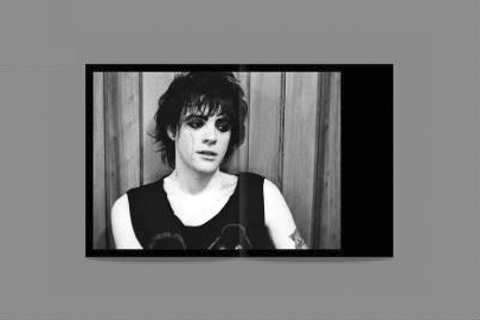
9. Can you tell us about collaborating with the accomplished, prestigious
and multi-award-winning graphic design agency, Farrow, for the tome's
art direction?
"Well, Mark Farrow is an absolute genius! I mean, Farrow Design
- Mark and Gary who works with him - I met them many, many years ago
and it was always my dream to do a book with them. I'd done commercial
jobs with them and I remember seeing a Kylie book that they did and
I just thought, 'My God, if I could ever do a book that they would design...'
Mark actually signed the Kylie book to me and it said something like,
'One day you'll have a book like this!' It just meant a lot to me, because
I was kind of like a massive Farrow fangirl, so the fact that they've
done pretty much all of my books, it's still just as exciting and I'm
just as big a fangirl now!"
*I mention to Valerie, that when I had the good fortune to interview
Mark Farrow, he told me: "I have a slight connection to Send Away
The Tigers, because I gave a copy of that book (Monika Monster, Future
First Woman On Mars) to Nicky, and one of the photos in that book became
the cover! But, we didn’t design it."
"Yeah, that's really sweet! I mean, throughout the years, myself
and the Manics would keep in touch and then we'd lose touch just through
being busy. But we kind of got back in contact again a few years later,
and then one day, I got a phone call - I can't remember if it was from
their manager or the record company - just asking if they could use
some of that imagery. Normally, with my personal work, I don't tend
to allow a lot of it to be used for commercial things, but because it
was the Manics and I love Nicky's art and I love his sensibility and
his kind of quality control on everything, I just jumped at the chance!
I was like, 'Oh God, yeah and I'm completely onboard for whatever part
of this book they want to use - like, let's do it!' So, I was thrilled
and I think it looks amazing!"
*Just out of curiosity, after having carefully chipped away at the image
selection process in order to determine / settle on the variety of pictures
to be included, I ask Valerie about Little Baby Nothings coming to fruition
- what the timescale was from her MSP Photobook being designed, to going
to print*
"The turnaround on the book was quite quick - about 2 months. It’s
hard to say exactly. I’d been discussing the book with Farrow for
some time, before the actual design process began."
10. With your music photography, are studio portraits, live photographs
and candid shots, equally important to you?
"Um (thinking)... it's a difficult question, because when I started
out - and I think the reason why I started out very, very initially
as a baby photographer - was really because I was just obsessed with
bands and obsessed with music and just wanted to get into every single
gig that I could, and I'd want to get into them for free! So I started
bringing my camera along and taking pictures, as a way to get in and
get into that whole industry - so I really love doing live photos! After
a while, I stopped doing that, but I did a lot of record company sessions
- whether it was a press session or an album cover or single sleeves
or what have you, which was with bands. So those would be in the studio,
and sometimes, I'd go and shoot some live stuff (pausing), what I really
like, is not having a plan. For instance, the last time that I photographed
the Manics was probably around the time of Send Away The Tigers, where
I went to Wales with them. We did a studio shoot in London and then
I went to Wales and we photographed them in their environment, and I
really enjoy those kind of things, where you're sort of nipping into
a couple of different worlds and putting it all together as one piece."
*I ask Valerie if she would ever consider eventually publishing a follow-up
MSP photographic book*
"The bulk of what I really value and treasure, is probably what's
in this book, because this is really us starting out and it's really
special to all of us. But there's definitely images from later on, that
have been published or that I would publish - I'm not sure there's enough
of them for a whole collection, but it may be that we do something else
together. I mean, we've been talking about other things that we could
do... I think Nicky's an incredible artist and he makes some fantastic
art pieces - aside from the band - and he just does such a lot of great
work with Polaroid. So, I'd really love to do something with him that's
more of a sort of art based project."
*Although a handful of Valerie's personal photographs were used for
Send Away The Tigers, the LP's rollout / marketing campaign and its
associated singles in 2007 (Your Love Alone Is Not Enough, Autumnsong,
Indian Summer), I also mention the music video / promo clip that she
directed for Autumnsong, which stars the long player's cover girls*
"(laughing) It was really fun, because I knew that it would piss-off
the record company, because it's just so uncommercial in a weird sort
of way, but it was so perfect! I mean, I love that video, but I just
can see that it probably fell on the record company's A&R person's
desk and they just shuddered a bit! Because it's just so sparse and
it's not chockfull of images flashing everywhere and all that kind of
stuff that I hate - it's just exactly what I wanted to make. So, I'm
quite pleased with it (laughing)."
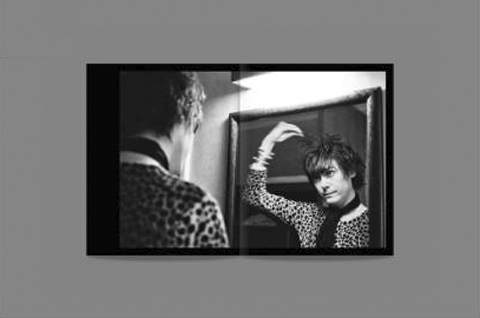
11. When discussing their tools of the trade, a considerable number
of respected and venerated professional photographers agree with the
adage that 'a picture is worth a thousand words', and how they are acutely
aware of the fact that their vision, intent and capabilities, can capture
vivid, evocative, affecting, stirring and memorable moments in time,
which shall preserve, imprint on viewers and retain a power that will
never numb. With the divine combination of aperture, lens focal length,
focus, shutter speed, film choice / image sensor, lighting, settings,
exposure, talent, skill, instinct, luck, technique, camera handling
etc, all coalescing to help freeze and frame subjects - from wide-angles
to close-ups. With musicians, be it the pure ecstasy, unadulterated
and unbridled joy of adrenaline-fuelled, action-packed, electrifying,
euphoric, mesmeric and showstopping live performances / the visceral
physicality of 'throwing shapes' onstage (pin sharp and in motion pictures)
in front of energised, vibrant crowds and zestful concertgoers, while
totally absorbed in the music, audience adulation, rhapsodic applause,
cheers and screams! Or, whenever artists are behind the scenes, in informal
situations or posing for press shots - from simple snaps right through
to elaborate and stylised photoshoots, taken in a range of surroundings.
So, returning to your photography in 1991-1992, what cameras, lenses
and films were you using?
"Um, I probably would have been using a couple of Nikon FM2s (pausing),
I'm actually not sure, I would have to go back and check. But, I think
it was definitely in my Nikon stage, possibly before I was using my
Hasselblad. I like cameras where I can just kind of roam around and
not have to make a big lighting setup... I don't really like photography
equipment very much, because I feel like it gets in the way of making
pictures. So, I always tended to try - if I could - to keep everything
as simplistic as possible. So at that time, that probably would've just
been shooting on very high speed film and a couple of Nikons, with probably
a 35mm lens and a 50mm lens. And, as I mentioned earlier, I think I
used Ilford film - whatever that very high speed film was that you could
shoot it at 1600, 3200 or 6400, it had a few settings that you could
push it. But you know what, I actually don't remember because I stopped
shooting film so many years ago, so it's hard to recall all of the brands.
But with the shot of Nicky on the front cover of Little Baby Nothings,
that was definitely high speed, black and white Ilford film."
12. Continuing with this train of thought, as lighting is such a
key element of image-making, would you say that you'd rather use natural
or available light, instead of utilising studio lighting, flash, reflectors
etc?
"Well then I did, yeah, because I didn't really know how to light
anything properly - I just didn't really know how. If I was going off
on a project on my own, I didn't really want assistants or people with
me, I just wanted to go off and have that connection with whoever I
was photographing, without another person sort of in the way. But then,
when I kind of progressed my career, obviously doing fashion and advertising
and all that sort of stuff, of course you needed lighting and you needed
really good people who were really good at that, and I was lucky enough
to work with people who could bring that aspect to it, that I couldn't
bring - a lighting technician sort of thing. But the way I make my books,
is me and my camera and the person or the people. I'll just use flash
on camera and I don't light anything."
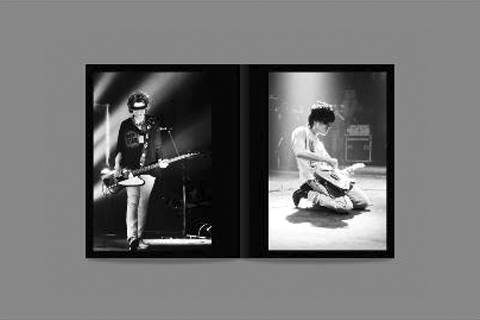
13. Are there any previously-unseen photographs in Little Baby Nothings,
which you really wish had been published by music publications at the
time, so that they would have become more widely circulated / known
rather than solely remaining on your contact sheets until now?
"No (without any hesitation). Because you know, in a funny way,
I'm quite territorial about my work and because I publish so much of
my own personal work - I've been publishing books since 2001 - and I
make so many books and zines, that I'm not really worried about what
people have seen or what becomes famous or iconic, or what hasn't been
seen. Because it's not the way I really do my work. I kind of think
that there's something really, really nice about things people haven't
seen and at some point, they get seen in a presentation that I had control
over, that I think is the best way to present that work."
*I ask Valerie if she has had any feedback on Little Baby Nothings yet
from JDB, Wire and Sean*
"Yeah, I saw them the other day because we were signing loads of
books together and they really love it! You know, I've worked pretty
closely with Nicky and Mark on the book, so everyone kind of knew what
was coming (laughing)."
14. For you personally, what qualities should a classic photograph have?
"I don't think there is any such thing at all, as a classic photograph.
I think that people should interpret what's in their own head and what
they like. It's all very, very, very subjective. I mean, you can do
so many different things as an artist or photographer... The only thing
to me that's essential, is being original and being true to yourself
and not copying other things that you see."
15. With monochrome and colour photography, do you favour one over
the other?
"Well now, I almost always shoot colour. I mean, I can't remember
the last time I did a project that was just black and white and I think
that's probably more the nature of digital, because I can shoot a whole
thing in colour and turn it all black and white very easily. But, I've
become more known for my kind of quite bright, vibrant, very punchy
colours and very vivid colourful backgrounds and clashing colours and
things that people are wearing. I like all of those just clashing, bright,
poppy colours! So for me, I definitely work in colour almost solely
and it was a real treat to do this book in black and white, because
I'd never really done something like that before."
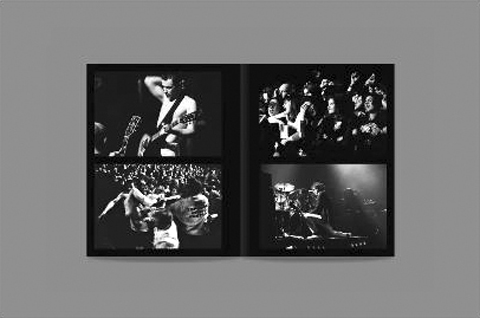
16. Are you happy to crop images or do you prefer to always print
them full-frame?
"That's a good question - I like that question, because I don't
get asked that a lot. I don't really like to crop, I generally tend
to compose so that a printed image will match what I saw in my viewfinder
and I certainly don't like other people cropping my pictures, because
they make an absolute mess of them (laughing)! But, when I'm editing
a book, occasionally I will think, 'Oh, there's an image that I wasn't
completely in love with, but I like - let's say the girl's face in it
and it looks really amazing - that would go really well with a shot
that was further away.' So then, I might crop into something a little
tighter. But, for the most part, I don't really do a huge amount of
cropping."
17. I read that as a photographer, it has always been crucial to
you to develop your own style and to never copy any of the snappers
who inspire you - which is something that you also touched upon earlier
- and interestingly, it seems that when working with MSP, you were essentially
learning on the job. But, how would you say your photographic approach
has developed since that time?
"Well, I think what's funny about it, is that was the beginning
of my career and I think that is much more similar to how I work now.
I sort of think I slightly deviated off that path for a while, while
shooting a lot more commercial work - I did a lot for Smash Hits and
a lot of boy bands and a lot of album covers for big bands. Then, I
came back to more that kind of - I don't really call it documentary
- but it's more sort of a slice of someone's life, just sort of jumping
into their life for a little bit and being allowed in on that kind of
adventure. So that's how I work now, whenever I can. Because I'm just
more interested in people and what they bring to the project, rather
than my own preconceived notions (pausing), I don't really tend to plan
things out that much."
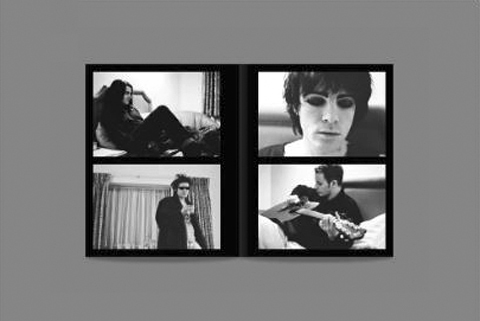
18. Do you have a favourite Manics era / any favourite songs, albums,
artwork and videos?
"You know, it's tricky. There's a few artists that I find it really
hard to sort of almost dislike anything they've done, because I just
love them so much, and to me, a whole body of work is almost one piece.
Like PJ Harvey - who I've worked with a lot - it's the same with her,
I find it hard to be objective about any of her work, because it's just
her and I love what she does! I might not like one song as much as like
another, but I just still love it all because it's sort of part of looking
at her whole art project or her career. With the Manics, I still am
very, very partial to Generation Terrorists - I don't know what they
think of that, but I mean to me, You Love Us, Little Baby Nothing and
Motorcycle Emptiness, because I kind of came in in that world, I suppose
it's very meaningful for me, that album and those songs."
*I say to Valerie, how I once had the great honour of interviewing Generation
Terrorists' producer, Steve Brown, who was a true gentleman and very
sadly passed away in 2021, but that I always warmly remember him and
our conversation, whenever I play this LP or hear any tracks from it*
"Oh, that's really nice! Coincidentally - and not because I did
the cover - I also really love Send Away The Tigers. I think that's
one of my absolute favourite albums that they've done!"
19. How would you sum up your time documenting the band - did you get
to know them well / have lots of fond memories?
"I've got loads of fond memories, but I don't think I got to know
them well. I think we had a kind of, maybe unspoken understanding and
it was easy to be around each other and it was just very unproblematic.
I think they were really focused on the four of them doing what they
were doing, kind of on a mission. And separately, I was on my own mission
to be a photographer and so those paths crossed, but we didn't necessarily
keep in touch and just go off and do other things together, we kind
of nipped in and out of each other's lives over those few years and
it was always just really nice! It was just very easy and they were
very funny, they were very smart, they were very well-read - it was
very easy to spend time with them. I think they just probably found
me relatively unannoying and not a huge hindrance to have around (laughing).
I think they liked the pictures that I was taking, so it was very organic."
*I comment how legions of MSP aficionados / champions in the group's
extraordinary, true-hearted and thriving, core fanbase - which rapidly
became a collective experience in a class of its own, and for some,
even a lifeline and a way of life - are still drawn to Manic Street
Preachers' immortalised lost soul, Richey, his fearlessness, sincerity,
sensitivity, intellectual acuity and magnificent, erudite, perceptive,
unfiltered, thought-provoking, edifying and awe-inspiring words / lyrics.
Not to mention, the astounding and monumental mythology surrounding
him before and after his devastating disappearance. So to have lots
of new photographs of Richey and this beloved / much-missed line-up
together, to savour, makes Valerie's MSP Photobook an even more special
keepsake for our collections to admire, relish and prize*
"Well, Richey was just really lovely and sweet and funny. He was
really just like the other guys, I didn't really encounter anything
problematic with Richey. As I said, he was just really, really sweet,
lovely and very flamboyant - like really great to photograph, because
he always looked fantastic! He and Nicky were kind of like the visual
rock stars and Sean and James were these incredible musicians, and somehow,
it all kind of worked together really well in a photograph. I don't
know how, because I don't think that would work that well now, if you
had a band where two people were dressing-up in leopard print and make-up
and two other guys looked more 'boy next door'... I don't know, maybe
it would?"
20. Lastly, chips or cream buns?
"(laughs heartily) Well, I absolutely hate cream of any kind, so
definitely chips!"
*I remark that James, Nicky and Sean, all opted for chips as well, so
Valerie has yet another connection to MSP*
"(laughing) Well, we've never discussed it, so that's crazy (laughing
again)! That's the best question I've been asked, I think."
*After our interview has finished, I then thank Valerie for her time
and wish her Good Luck with her photography and the release of Little
Baby Nothings, also telling her that my pre-ordered signed copy is due
to arrive by post the very next day, which I can't wait to receive*
"Well, thank you very much and it's no problem. It's really nice
that people want to talk about the book and spread the word - obviously
that means a lot to me, so I'm happy to do it. You know, the book's
not even out and I've already gained loads of Manics followers, which
is always nice, because they can see the other things that I do as well,
which is cool! I really appreciate your time and they were good questions,
really interesting to talk about!"
A very special thanks to Valerie and to R*E*P*E*A*T's
Editor, Rosey, for all of their time and help. Stay Beautiful.
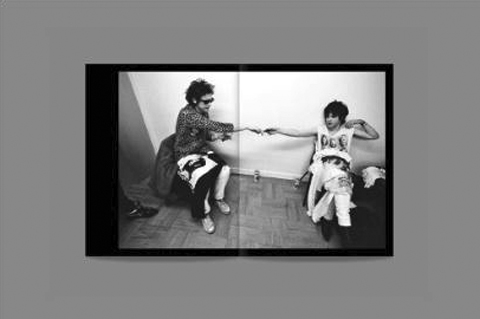
https://www.instagram.com/wynterinspace/?hl=en
https://store.manicstreetpreachers.com/collections/little-baby-nothings
"I’ve loved artists books and zines since I was a teenager
and discovered the amazing shop ‘Printed Matter’ in New York,
which has been and still is a major influence on me. I saw loads of
underground punk and art publications I would never have known about
otherwise. There is so much freedom in making work in book/zine form,
it’s limitless. I like putting physical work into the world - I
think that’s really important. I don’t like looking at photography
online, although I do celebrate the fact that it’s got rid of a
lot of the preciousness of a seemingly out-of-touch industry."
Browse R*E*P*E*A*T's extensive collection of exclusive
Manics pics here
*+*+*+*+*+*+*+*+*+*+*+*+*+*+
*+*+*+*+*+*+*+*+*+*+*+*+*+*+
|











